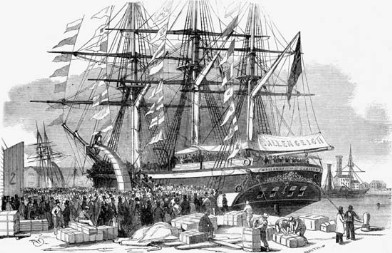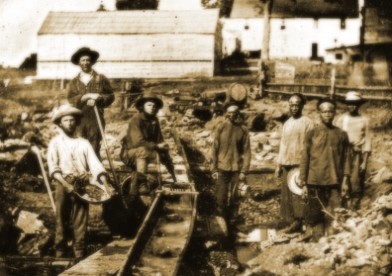MigrationAgents.com, EducationAgents.com, Perth Migration Agent, Perth Education Agent and Anquire.com Worldwide
Australian Post-war Migration
Migration
The Department of Immigration and Citizenship has facilitated the permanent migration of more than seven million people since its establishment in 1945. Migrants' contribution to Australian society, culture and prosperity has been an important factor in shaping our nation.
A large-scale program of migration to Australia began at the end of World War II when millions of people in Europe were displaced from their homelands. During this time in Australia there was a desperate shortage of labour and a growing belief that substantial population growth was essential for the country's future.
These and other factors led to the creation of a federal immigration portfolio in 1945.
By 1947, a post-war immigration boom was underway, with a large and growing number of arrivals including those on government-assisted passage.

The department reached agreements with the United Kingdom, some European countries and the International Refugee Organisation (IRO) to encourage migrants, including displaced persons from war-torn Europe, to come to Australia. By 1950, almost 200 000 people had arrived.
One million more migrants arrived in each of the following four decades. Today, approximately one in four of Australia's more than 22 million population was born overseas. New Zealand and the United Kingdom are the largest source countries for migrants, but other regions—notably Asia—have increased significantly.
Early migration waves
The date of the first human occupation in Australia remains unknown but evidence exists that humans have been on the continent for at least 40 000 years. Consequently, the Aboriginal people are regarded as the Indigenous people of Australia.
Transported criminals were the basis of the first migration from Europe. Starting in 1788, some 160 000 convicts were shipped to the Australian colonies. From the early 1790s, free immigrants also began coming to Australia.
The rapid growth of the wool industry in the 1820s created enormous demands for labour and sparked an increase in the migration of free people from the United Kingdom. The social upheavals of industrialisation in Britain also resulted in many people emigrating to escape widespread poverty and unemployment.

During the Gold Rush era of 1851 to 1860, early migration peaked at arrivals of around 50 000 people a year. During this period, Chinese immigrants were the largest non-British group.
The migration program has reflected economic or social conditions in Australia and elsewhere. For example:
During the 1840s a large number of Irish immigrants came to Australia to escape famine in their homeland.the 1860s to the late nineteenth century, labourers from Melanesia were recruited to work on Queensland plantations.the 1860s to the 1920s concerns about population imbalance resulted in deliberate efforts to attract women to Australia.the second half of the nineteenth century, Afghani, Pakistani and Turkish camel handlers played an important part in opening up the continent's interior, facilitating the construction of telegraph and railway lines.fishers were instrumental in the pearling industry in the late nineteenth century.
The two world wars also influenced Australia's migration program. The resettling of ex-servicemen, refugees and young people were significant chapters in Australian immigration history.
Post-war developments
The most ambitious part of Australia's migration program followed the end of World War II. Australia negotiated agreements with other governments and international organisations to help achieve high migration targets.
The agreements included:
a system of free or assisted passages for United Kingdom residentsassisted passage scheme for the British Empire and United States ex-servicemen, later extended to ex-servicemen or resistance fighters from The Netherlands, Norway, France, Belgium and Denmarkagreement with the IRO to settle at least 12 000 displaced people a year from camps in Europemigration agreements, often involving the grant of assisted passage, with the United Kingdom, Malta, The Netherlands, Italy, West Germany, Turkey and Yugoslaviamigration agreements with Austria, Greece, Spain, Belgium and other countries.
These agreements are no longer in force.
Economic and humanitarian events around the world subsequently influenced the size and source countries of the Australian program. At various times in the 1950s and 1960s, the Netherlands, Germany, Italy, Greece, Turkey and Yugoslavia were important migrant source countries.
There were also significant intakes of:
Hungarian and Czech refugees following unrest in those countries in 1956 and 1968 respectivelyfollowing the overthrow of the Allende Government in 1973after the end of the Vietnam war in 1975after martial law was declared in December 1981.
Today the migration program is global, using one set of criteria for applicants anywhere in the world, with migrants originating from more than 185 countries.
The impact of immigration
The post-war immigration program has benefited Australian life in many ways.
Economic
Immigration affects the demand side of Australia's economy through:
- migrants' own spending (food, housing and leisure activities)
- expansion (investment to produce extra goods and services)
- of government services (health, education and welfare).
It also affects the supply side of the economy through:
- labour, skills and capital introduced into Australia
- businesses developed by migrants
- contributions to technology

- productive diversity through knowledge of international business markets.
Like all Australians, migrants pay taxes to, and receive benefits and goods and services from, government. Research shows that overall, migrants contribute more in taxes than they consume in benefits and government goods and services. As a result migrants generate surpluses for government.
Australia's economic growth is significantly enhanced as migrants directly impact on the economy through their contribution to supply and demand and their indirect contribution to government surpluses.
Population composition
Migration has had a very significant effect on Australia's population. At the end of World War II, Australia's population was just more than seven million, with around 90 per cent born in Australia.
The Australian Bureau of Statistics estimated resident population (ERP) at March 2010 was 22.27 million people.
At 30 June 2009, of Australia's ERP of 22 million people one quarter were born overseas (5.8 million). This continues the historical trend of a high proportion of overseas-born among Australia's population. People born in the United Kingdom were the largest group of overseas-born residents (1.2 million persons at 30 June 2009), followed by those born in New Zealand (529 200), China (351 000), India (308 500) and Italy (219 300).
Population growth
Natural increase has been the main source of population growth over the past hundred years, contributing two-thirds of the increase in population between 1901 and 2001. Immigration has also been a significant contributor to Australia's population growth.
Immigration's contribution to population growth is likely to increase during the next 30 years as the ageing of Australia's population leads to deaths increasingly catching up with births.
Produced by the National Communications Branch, Department of Immigration and Citizenship, Canberra.
Last reviewed November 2010.
Sub-Menu:
- Perth Migration Agent
- Australian Immigration
- Australian Post-war Migration ←
- Code of Conduct